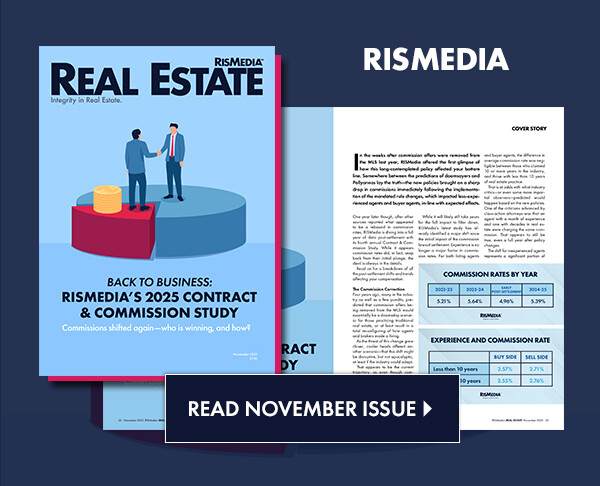As we move into the second half of 2025, the Institute for Luxury Home Marketing’s Mid-Year Luxury Market Review reveals a narrative defined not by volatility, but by strategy, resilience and recalibration.
From strong early-year activity to more measured moves in Q2, the past six months have marked a critical turning point in how affluent buyers and sellers are approaching real estate—and how real estate professionals need to respond.
Momentum shifts: a tale of two quarters
The first half of 2025 revealed a shift from early-year optimism to more measured movement by mid-year.
In Q1, the luxury market surged, with January sales of single-family homes up 17.6% and attached properties up 12.7% year-over-year. Inventory and listings rose, fueled by confident sellers and cash-ready buyers seeking lifestyle-driven homes.
By February, momentum softened. While inventory continued climbing, buyers and sellers grew cautious amid interest rate uncertainty. March brought a brief rebound, especially in the single-family segment, where sales jumped 40% from February, before slowing again in Q2.
April and May were quieter, likely as buyers and sellers assessed the potential impact of new tariffs. June, however, brought a modest rebound. Single-family sales rose 11% year-over-year, while attached homes saw a slight 0.6% uptick.
Inventory gains in June, up 26% for single-family homes and 20% for attached year-over-year, were largely due to longer time on market, not a flood of new listings. In fact, new listings slowed sharply compared to earlier spring activity, reflecting seller hesitation rather than urgency.
This is not a market in decline—it’s one recalibrating. Prices are steady. Buyers are deliberate. Sellers are patient. And the market’s strength lies not in speed, but in strategy.
External influences: economic caution meets strategic decision-making
Interest rates remain a central force shaping market psychology. Buyers, especially in the luxury tier, are not necessarily constrained by lending limits, but they still watch the economic landscape closely. The result? Increased reliance on cash deals, equity financing and private lending, which continues to insulate the high-end segment from broader market volatility.
Sellers, too, are once again biding their time. Many have started to wait for clearer economic signals before listing, especially if their decision is not born from necessity, i.e. there is no financial nor personal reason pressuring them to sell or because they are holding onto a low mortgage rate that remains a more compelling financial incentive to not move.
At the same time, several external factors are subtly shaping luxury market behavior. Recent tariff policies are beginning to weigh on consumer confidence and cast uncertainty over future construction costs. Stock market fluctuations have prompted many affluent homeowners to reevaluate the timing of their real estate transactions. Meanwhile, migration patterns continue to shift toward low-tax, lifestyle-rich destinations, especially among those seeking flexibility or exploring second-home opportunities in amenity-driven communities.
Current trends: what’s moving, what’s stalling
Here’s what’s driving today’s luxury landscape:
Steady prices: Despite slower sales, median sold prices are holding and even rising slightly. Single-family homes saw a 1.6% increase and attached properties saw a 6.4% year-over-year increase in June, signaling a continued demand for well-positioned properties that deliver turnkey value.
Expanded inventory: Listings are up over 25% compared to 2024 in some segments. But rather than signaling oversupply, this reflects extended time on market and buyer deliberation, not seller desperation, as the percentage of new listings entering the market has declined over the last few months.
Strategic buyers: Buyers are increasingly value-conscious, comparing properties carefully and prioritizing location, quality and lifestyle alignment over speed.
Selective sellers: Only well-prepared homes with modern finishes and move-in readiness are commanding top dollar. Homes lacking these features are facing longer timelines and list price adjustments.
What this means for real estate professionals
In today’s recalibrating luxury market, data is your most powerful tool. Understanding not only what’s happening, but why, allows you to serve clients more effectively, whether they’re buying, selling, or repositioning investments.
Top-performing real estate professionals are already:
- Using market data to advise clients on timing and pricing.
- Tailoring marketing strategies to highlight lifestyle-driven features.
- Helping buyers evaluate properties not just on price, but on long-term value, renovation potential and equity strategy.
- Guiding sellers on positioning their homes for today’s selective, financially savvy buyers.
Looking ahead: the road through 2025
The second half of 2025 is poised to be shaped by two key forces:
- Interest rate shifts – Any significant rate cut could spark a wave of new listings and buyer reengagement.
- Continued buyer selectiveness – Even with improved financing conditions, affluent buyers will remain focused on quality, lifestyle fit and long-term flexibility.
Urban cores may see a slow return of younger luxury buyers, while renovation-minded shoppers are looking for homes with strong fundamentals and room to add value.
For sellers, the formula is clear: prepare, price appropriately and partner with data-driven professionals who can guide strategic decisions. For buyers, patience paired with preparation could uncover real opportunities.
Final thought: the smart use of market intelligence
This is not a “cooling” market, it’s a calibrated one. The luxury segment has proven remarkably resilient amid external pressures, and while the pace has shifted, opportunities abound for those ready to act strategically.
Luxury agents who leverage this data, from inventory patterns to shifting buyer psychology, will be best positioned to guide their clients through what promises to be an insightful and active second half of the year.
To read more insights into the report about the luxury real estate market by The Institute, click here.











